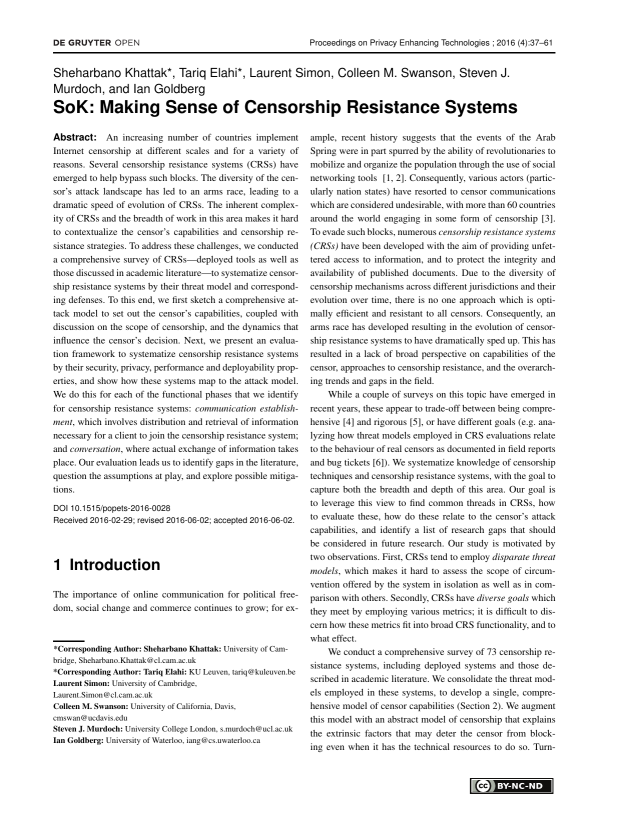SoK: Making Sense of Censorship Resistance Systems
Authors: Sheharbano Khattak (University of Cambridge), Tariq Elahi (KU Leuven), Laurent Simon (University of Cambridge), Colleen M. Swanson (University of California, Davis), Steven J. Murdoch (University College London), Ian Goldberg (University of Waterloo)
Volume: 2016
Issue: 4
Pages: 37–61
DOI: https://doi.org/10.1515/popets-2016-0028
Abstract: An increasing number of countries implement Internet censorship at different scales and for a variety of reasons. Several censorship resistance systems (CRSs) have emerged to help bypass such blocks. The diversity of the censor’s attack landscape has led to an arms race, leading to a dramatic speed of evolution of CRSs. The inherent complexity of CRSs and the breadth of work in this area makes it hard to contextualize the censor’s capabilities and censorship resistance strategies. To address these challenges, we conducted a comprehensive survey of CRSs—deployed tools as well as those discussed in academic literature—to systematize censorship resistance systems by their threat model and corresponding defenses. To this end, we first sketch a comprehensive attack model to set out the censor’s capabilities, coupled with discussion on the scope of censorship, and the dynamics that influence the censor’s decision. Next, we present an evaluation framework to systematize censorship resistance systems by their security, privacy, performance and deployability properties, and show how these systems map to the attack model. We do this for each of the functional phases that we identify for censorship resistance systems: communication establishment, which involves distribution and retrieval of information necessary for a client to join the censorship resistance system; and conversation, where actual exchange of information takes place. Our evaluation leads us to identify gaps in the literature, question the assumptions at play, and explore possible mitigations.
Copyright in PoPETs articles are held by their authors. This article is published under a Creative Commons Attribution-NonCommercial-NoDerivs 3.0 license.

